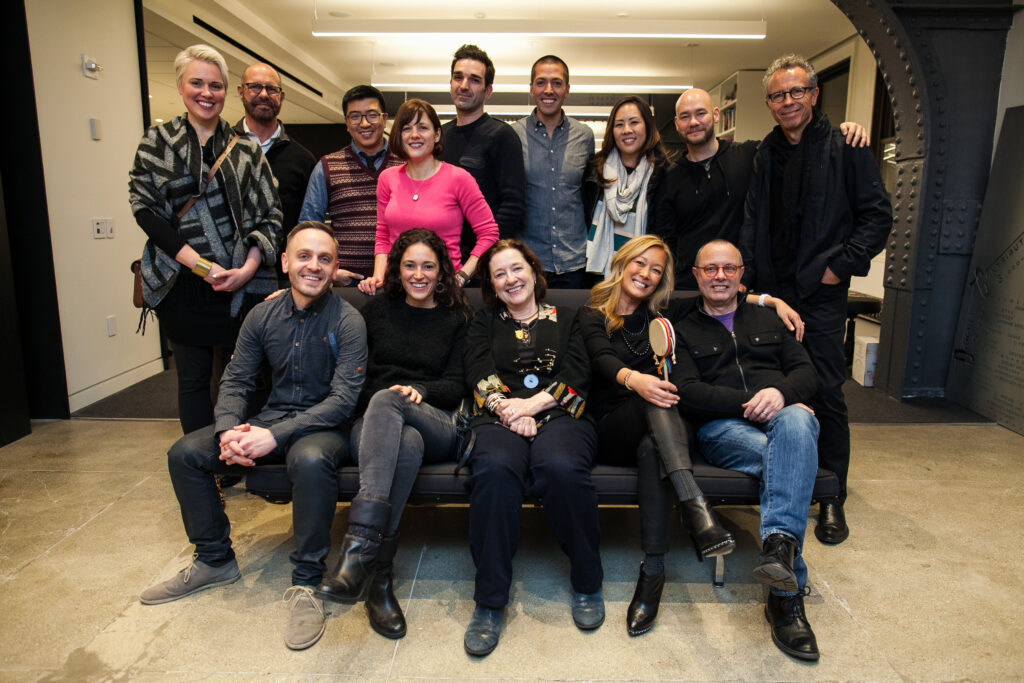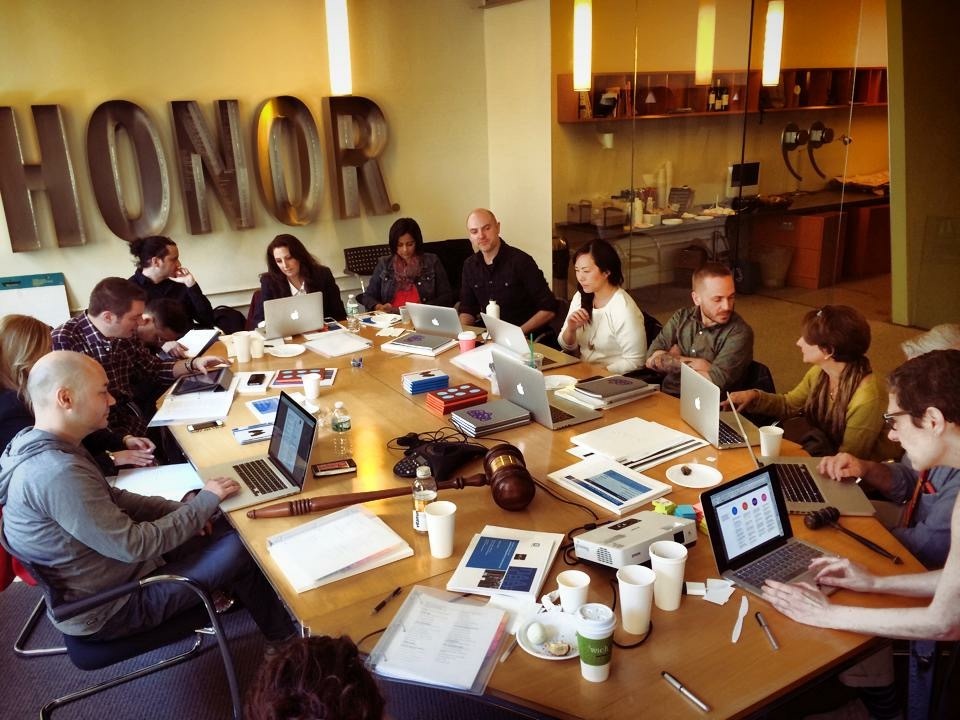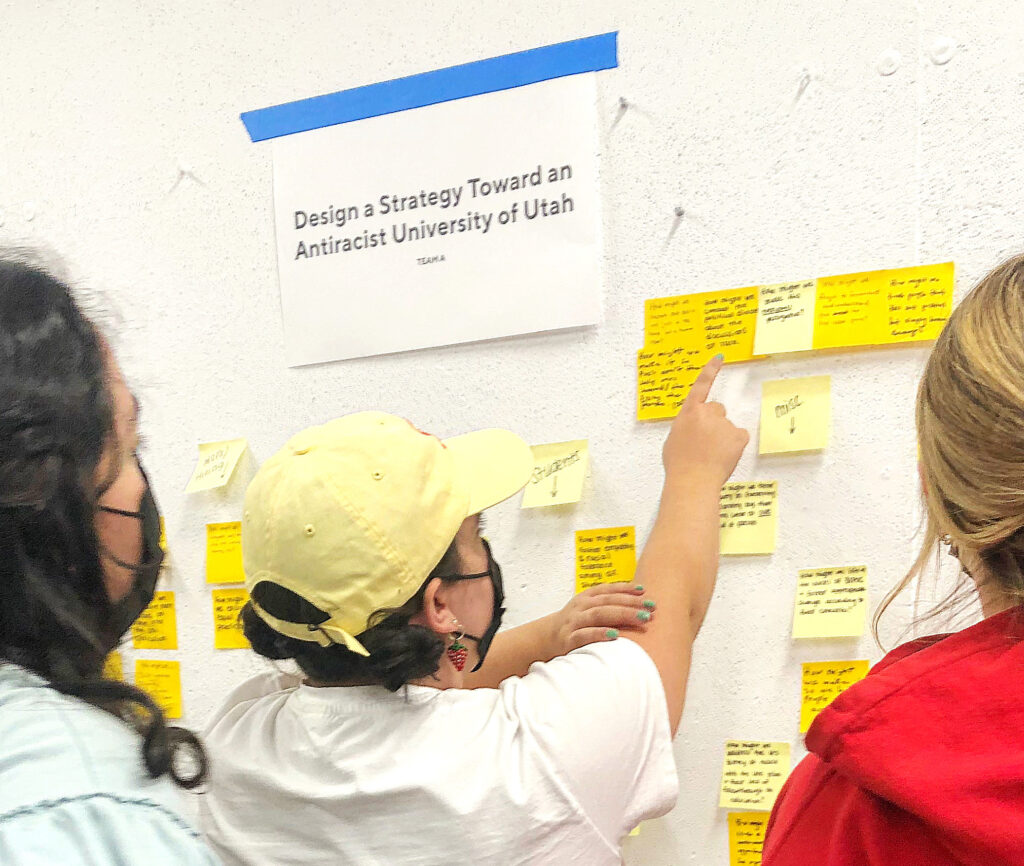by Struck Chief Operating Officer, Kevin Perry
In a recent communication training session, I was tasked with defining my professional identity in a single phrase. This was tough for me. Over two decades as a designer, my journey has taken many forms. Like many designers, I started as a child who loved drawing, eventually designing the high school yearbook cover (no judgment, please, but it used the Papyrus font).
I always knew that I’d be a designer. What I didn’t realize is how that would evolve into something bigger still.
After extensive years working in agencies as a designer and creative director, I found myself stepping into leadership. Some of the best years of my professional life have been spent playing different roles within AIGA (the professional association for design). This is where I met hundreds of talented design leaders from across the world and learned what it meant to be a part of something greater.


AIGA National Board 2013-2016
My trajectory continued to evolve as my design skills found a fresh application in organizational design. In 2011, I joined Struck, where my role ventured away from the traditional visual aspects of design. I evolved into a versatile designer adept at navigating processes and systems, undertaking a variety of organizational responsibilities.
What I’ve found is that while my previous roles were very different from each other, the way I operated as a designer and leader was quite consistent. I’ve found clarity explaining my approach as Design Thinking—a process that makes use of the skills and steps inherent in design to solve bigger problems. It prioritizes a human focus, emphasizing essential skills like empathy, curiosity, inclusivity, and collaboration. It encompasses a range of principles and techniques like testing, iterating, team alignment—and yes, plenty of sticky notes—all aimed at helping users achieve their goals.
The business world needs these skills more than ever to adapt to a transformative time. Companies are making substantial investments in design, forming dedicated design teams and elevating designers to executive positions. (Spoiler alert: More to come on this!)
Recognizing designers as leaders has become increasingly prevalent, given design’s undeniable influence on the business world. In 2018, McKinsey & Company set out to identify the business value of design. They conducted the most rigorous and comprehensive research yet, proving that companies that excel at design grow revenues and shareholder returns at nearly twice the rate of their industry peers.
McKinsey’s findings also revealed a doubling of executive design leaders among the world’s largest companies in the last five years—with these leaders hailing from a variety of backgrounds and career paths.
For many, including myself, the transition from a design role to agency leadership unfolded organically. For me, credit goes to the role Design Thinking played. Design Thinking, in essence, gives designers the mindset and skillset to lead—generating genuine value for real people.
Transitioning from a Designer to a Design Leader comes with its own set of distinct challenges. Navigating effortlessly between creative and analytical thinking, from design to business, and from empathy to directive, is no easy task.
In 2021, I initiated the inaugural Design Strategy class at the University of Utah, aimed at equipping designers with these strategic and leadership abilities so designers can have a seat at the decision-making table. The class covers topics vital to today’s designers: the empathy to understand diverse perspectives, the flexibility to respond to change, and the ability to deliver more useful, usable, and desirable solutions. They’re all skills rooted in Design Thinking. My hope is that the course’s students will emerge with the tools to more easily and effectively become Design Leaders.

University of Utah Design Strategy Course
Now, my path once again evolves as I move into the position of Chief Operating Officer at Struck. This role presents a unique opportunity to take a human-centered approach blending design philosophy with our business strategy—making organizational behaviors and cultures more purposeful and effective. I’m feeling honored and energized.
One of my main goals is to not only ensure operational excellence but to also foster our creativity and nurture our innovation. Ultimately, my primary role is fulfilling Struck’s vision creating Experience Transformation—crafting experiences that transcend enjoyment and memorability, building deep affinity. It’s business informing design and design informing business, with an experience outcome that’s irresistibly compelling.
This is an exciting time for designers. Designers were once tasked with executing others’ ideas. Now, we’re in a position to put their own thinking to work—showing us what’s possible. It means that the possibilities are as unlimited as creativity itself.
Now, when I attempt to define my professional identity in a single phrase, I have the confidence to say “I am a Designer and Executive Leader who transforms, shapes, and nurtures cultures to create purposeful and effective human-centered experiences.”
Now, we design something bigger and do something better together.

